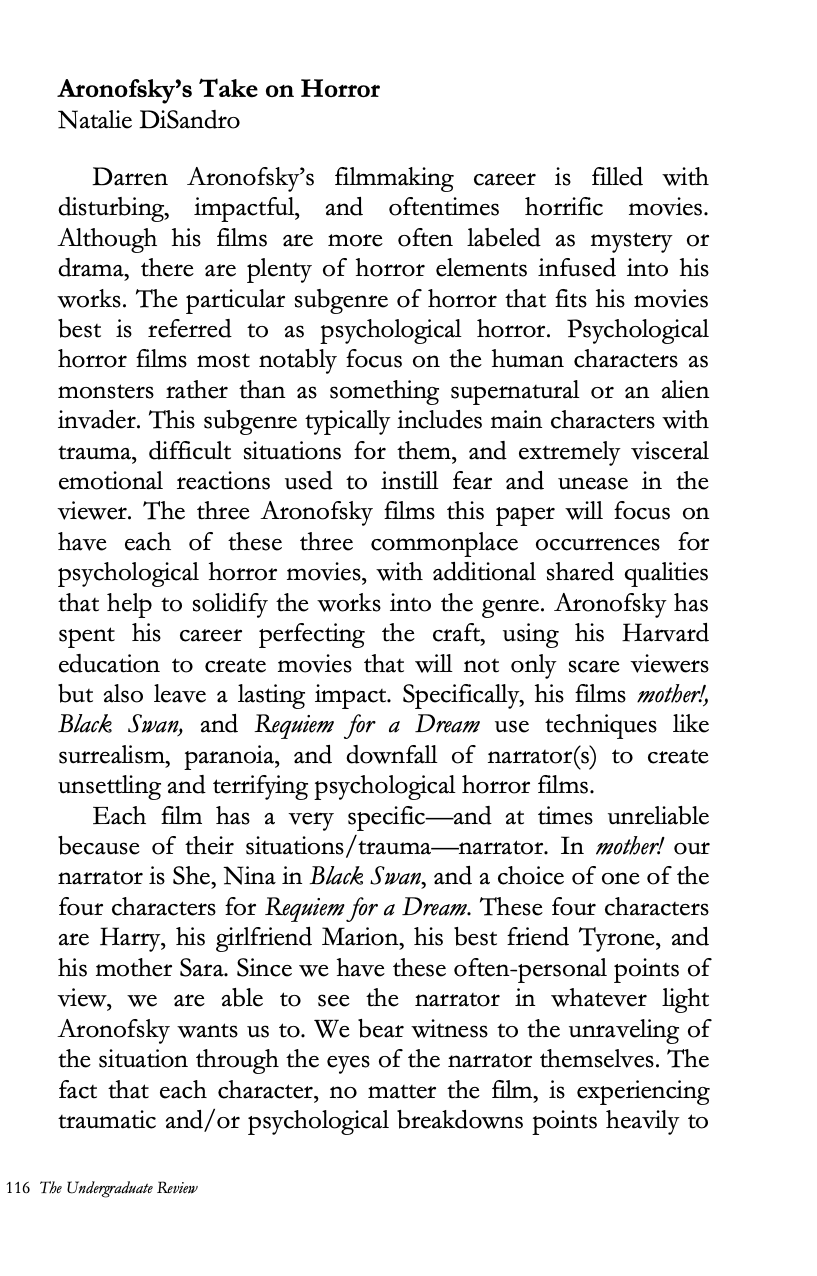Aronofsky’s Take on Horror
Abstract
Darren Aronofsky’s filmmaking career is filled with disturbing, impactful, and oftentimes horrific movies. Although his films are more often labeled as mystery or drama, there are plenty of horror elements infused into his works. The particular subgenre of horror that fits his movies best is referred to as psychological horror. Psychological horror films most notably focus on the human characters as monsters rather than as something supernatural or an alien invader. This subgenre typically includes main characters with trauma, difficult situations for them, and extremely visceral emotional reactions used to instill fear and unease in the viewer. The three Aronofsky films this paper will focus on have each of these three commonplace occurrences for psychological horror movies, with additional shared qualities that help to solidify the works into the genre. Aronofsky has spent his career perfecting the craft, using his Harvard education to create movies that will not only scare viewers but also leave a lasting impact. Specifically, his films mother!, Black Swan, and Requiem for a Dream use techniques like surrealism, paranoia, and downfall of narrator(s) to create unsettling and terrifying psychological horror films.



